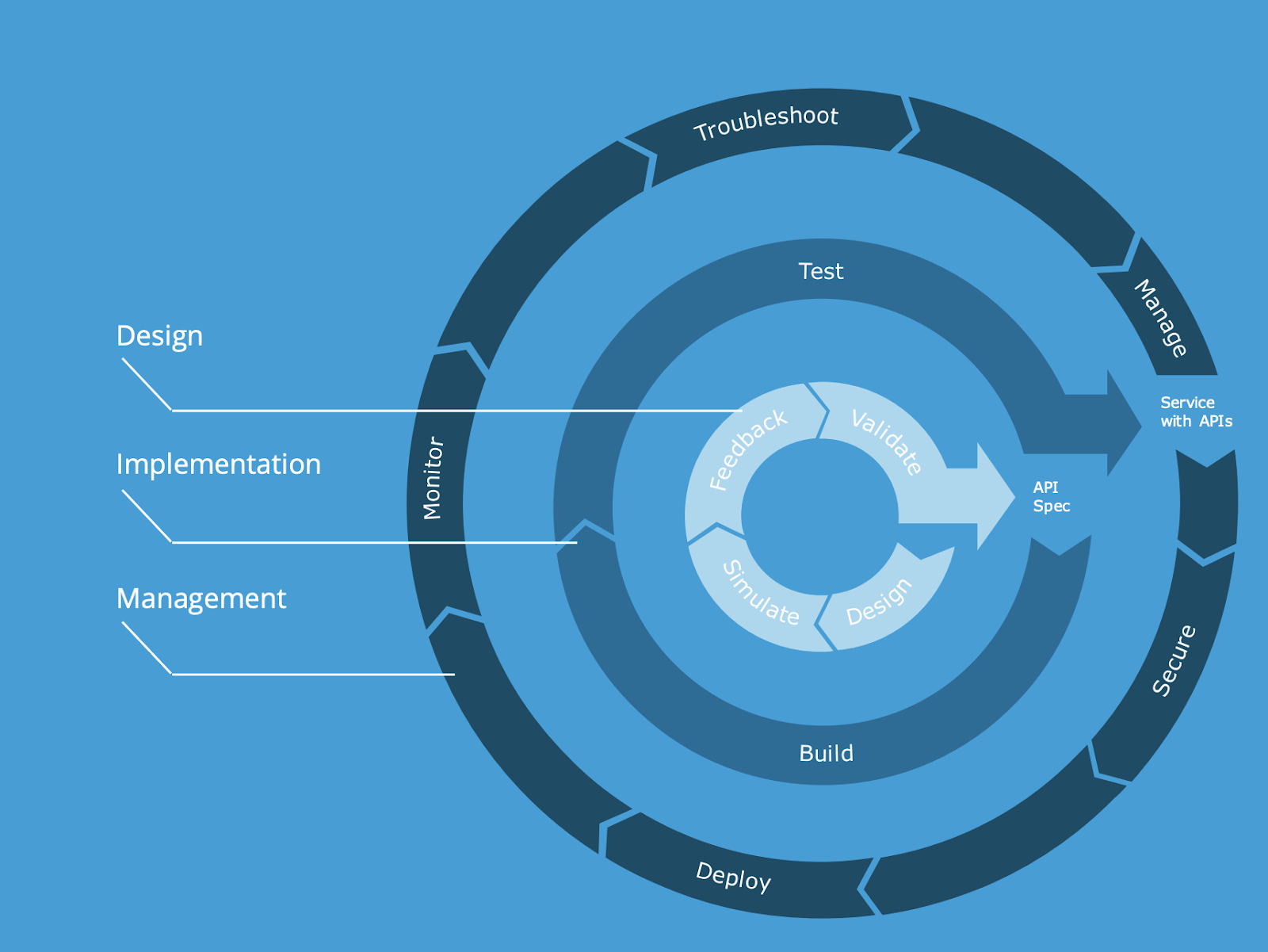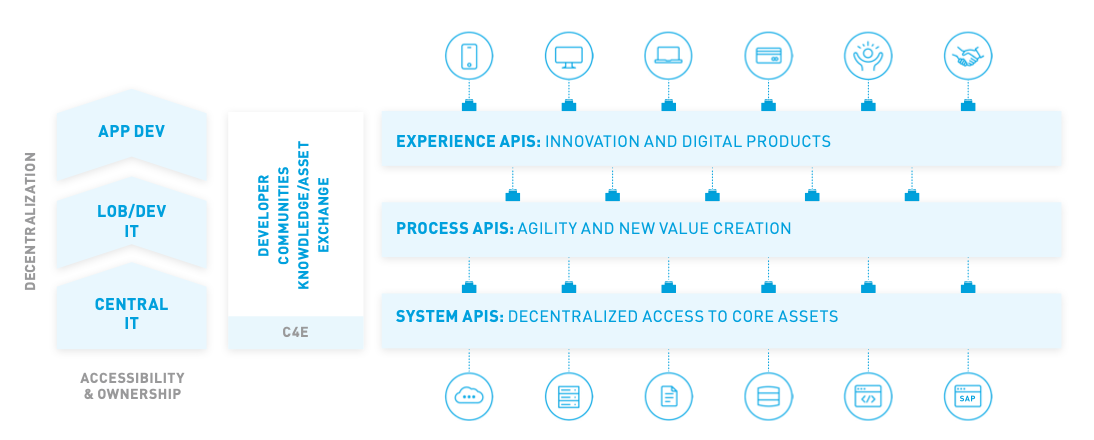Integration is critical for all businesses, and the right Integration Platform-as-a-Service (iPaaS) is a key piece for any organization looking to accelerate digital efforts. However, truly unlocking your data and systems is about more than just connecting systems and applications. To build an agile and future-proof business, you need an integration strategy and partner that recognizes that iPaaS alone isn’t the end solution.
The world has been disrupted (and so have your customers)
In the early 2000s, we saw a massive shift toward the experience economy and a need for speed. It was no longer big beating the small, but rather the fast beating the slow. A need for innovation emerged after centuries of status quo. The COVID-19 crisis has further exacerbated this shift. Today, the world has rapidly accelerated into the fourth industrial revolution and companies no longer compete on product and price alone. Organizations are now empowering developers to build new experiences with their organization’s data and by plugging into the data from other organizations’ ecosystems. Development is now a revered craft and is the means of differentiation for any organization. One does not buy innovation or differentiation — you must build brilliant experiences.
Turning to APIs for innovation
Enter APIs. There was a shift from SOA to WOA, and then REST emerged — a firewall, mobile, browser, and internet friendly type of API. One of the key advantages of REST APIs is their flexibility. Data is not tied to resources or methods, so REST can handle multiple types of calls, return different data formats, and even change structurally with the correct implementation of hypermedia. This flexibility allows developers to build an API that meets your needs, while also meeting the needs of very diverse customers.
The rise of APIs came out of organizations’ need to innovate and differentiate, faster. To meet changes in customer expectations and build new experiences on mobile, web, or any other channel with more ease. APIs enabled this and, more specifically, the data that APIs surfaced.
With more companies relying on cloud infrastructure and a host of SaaS applications, the neat and tidy box where an enterprise’s IT infrastructure lived is all but nonexistent. With all of this change, APIs play a vital role in modern integration.
The need for API lifecycle management
As API adoption has increased, their usage has spread across all areas of the business. Procurement services, mobile apps, and user interaction tracking all run through APIs. An organization’s IT infrastructure should have the agility to cater to these business requirements.
While APIs are key to integration in today’s digital world, it’s not just APIs alone. Organizations must give their API programs a first-class treatment that allows developers the flexibility to integrate with their ever-evolving environments.
The focus on serving the full lifecycle of an API and enabling the associated ecosystem — from API design to serving the API developer, to serving the developer community consuming the APIs — gets to the heart of API management. APIs are a product. An API first approach is taking into accommodation this lifecycle and the strategic use of APIs as a product and managing it as such. Here the outcome is a well designed, managed, and secured API to serve developers building new experiences.
From application integration to API-led connectivity
Despite its importance, far too many organizations do not approach integration with a strategic long-term mindset. Either it’s not a consideration at all — think lines of business driving credit card purchases of SaaS applications without reflecting on how they will connect those applications to underlying ERP systems — or it is only considered with a short-term approach, which values the success of an individual project to the detriment of the enterprise as a whole.
IT leaders must meet two seemingly contradictory goals: ensure stability and control over core systems of record, while enabling innovation and rapid iteration of the applications that access those systems of record. This is the challenge now variously referred to as bi-modal or two-speed IT. Existing connectivity approaches are not fit for these new challenges.
A new approach is required, one that leverages existing investments, and enables IT to seize the moment and drive real change; one that enables agility, yet also allows IT to maintain visibility and control. This change is a journey that requires shifting IT’s mindset away from project delivery to delivering assets as services and enabling line of business and IT to self-serve and build their own connections, processes, and applications, while central IT governs access, SLAs, and data quality. In short, IT has to become an enabler for the business.
The difference between APIs and API-led connectivity
Connectivity is a multi-faceted problem across data access, orchestration, and presentation, and the right solution must consider this problem holistically rather than in a piecemeal fashion. Only considering APIs means only solving one part of the connectivity challenge.
APIs
APIs are the instruments that provide both a consumable and controlled means of accessing connectivity. They serve as a contract between the consumer of data and the provider of that data that acts as both a point of demarcation and a point of abstraction, decoupling the two parties and allowing both to work independently of one another (as long as they continue to be bound by the API contract). Finally, APIs also play an important governance role in securing and managing access to that connectivity.
APIs can only serve as a presentation layer if it sits over a set of orchestration and connectivity flows. This orchestration and connectivity are critical: without it, API-to-API connectivity is simply another means of building out point-to-point integration.
API-led connectivity
API-led connectivity is a methodical approach for ordering and structuring APIs as building blocks to connect and expose assets in three distinct layers. In this architecture, APIs serve specific roles and provide access to non-central data across the organization without compromising governance, compliance, and control.
Legacy application functionality and data exposed as base level “system APIs” are composed into core API products (sometimes called “process APIs”) made to be consumed in multiple business contexts. Further API abstractions are added as needed to serve the needs of new consumer contexts. For example, “experience APIs” are intended for a specific consumer channel like mobile.
Unlock the full potential of iPaaS with API-led connectivity
The iPaaS space is rooted in a cloud-based experience for a wide range of integration patterns — including application to application, B2B, MFT, and much more. The focus of iPaaS is the integrator, and the outcome of integration is a running process where information flows within.
However, the outcome of integration ultimately is not integration itself — that is a short-sighted focus. The outcome is a new business model, new experiences, and a transformed organization where teams can innovate quickly. APIs are integral in today’s conversation and for very valid reasons — they are the heart of how technology is used to support the pace of innovation businesses and customers require.
Organizations have found value in point-to-point iPaaS vendors to automate routine tasks, like sending email notifications when a trigger occurs in Salesforce or automatically pulling data from an excel file and loading it into a database. However, their extensibility has been limited to the needs of individual users. Central IT teams are rarely able to use these solutions to help them replace the custom code that forms the backbone of so many organizations today.
Few platforms are versatile enough to address the wide range of use cases required to enable connectivity across an entire organization — from creating simple integrations to fundamentally transforming their IT infrastructure.
Customer spotlight
“Before MuleSoft and Salesforce, we were processing 30,000 applications per month with a $30 million annual personnel budget. Now, we are able to process 60,000 applications per month with the same $30 million annual budget. Prior to modernizing PEAK, we would have had to double our staff to accomplish this.”
– Antoinette Taranto, Chief Customer Officer, State of Colorado
The integration space has seen many changes. The biggest was the genesis of API management as a technology. It is not just the technology that’s significant, it’s the “why” behind it.
To learn more about how a unified integration platform can help your business solve your short-term challenges and set you up for continued future success, check out our latest whitepaper, Is iPaas enough?











